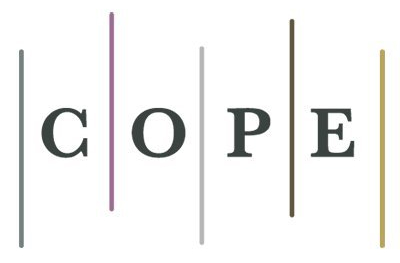Hypothermia in newborns with hypoxic - ischemic encephalopathy in clínica Universitaria Reina Fabiola
DOI:
https://doi.org/10.22529/me.2021.6(4)05Keywords:
Hypoxic-ischaemic encephalopathy; Hypothermia; NewbornAbstract
INTRODUCTION: Hypoxic-ischemic encephalopathy (HIE) is one of the main causes of morbidity and
mortality in term newborns. It occurs when a newborn has symptoms of encephalopathy, associated with
an asphyctic event in the perinatal period. Among the treatments that have been studied in human neonates,
the most widely analyzed and recommended is therapeutic hypothermia. Since 2014, the “complete
therapeutic hypothermia” protocol has been implemented in the neonatology service of the Clínica
Universitaria Reina Fabiola as a treatment for HIE due to perinatal asphyxia.
OBJECTIVE: Describe the characteristics of the population of patients admitted to the hypothermia
protocol and the results of the use of this treatment, since its implementation in January 2014 in the
Neonatology Unit of the Reina Fabiola Clinic until November 2020.
MATERIALS AND METHODS: Data were collected from all patients undergoing “complete therapeutic
hypothermia” as treatment for HIE, from the implementation of the protocol in the neonatology service of
the Clínica Universitaria Reina Fabiola in 2014, until November 30 of 2020. General data (weight,
gestational age); patient selection (moderate or severe encephalopathy, seizures), admission laboratory,
Apgar score; type of resuscitation; perinatal asphyxia event; mode of birth; other treatments (sedation,
inotropes, others); complications; complementary studies (brain ultrasound, electroencephalogram);
evolution (dies, days, days of hospitalization, home hospitalization). The characteristics of the patient
sample were reported with descriptive statistics.
RESULTS: Fourteen (100%) patients were admitted to complete hypothermia. The average weight was
3110g. Average gestational age 38 weeks. In 12 (85.7%) it was possible to identify a perinatal asphyxia
event. Nine (64.3%) were born vaginally. Eight (57.2%) neonates and six (42.8%) had moderate
encephalopathy. The average pH was 7.01 (S.D. 0.18) and the mean base excess was -18.6 (S.D. 5.31).
Seizures were identified in seven (50%). Treatment was started on average 2.71 hours after birth (O.D.
2.92). 10 (71.4%) inotropes required. 13 (92.9%) were assisted with mechanical ventilation, the mean
number of days was 8.4 (SD 6.4). Pathological brain ultrasounds and hypovoltage electroencephalograms
were reported in nine (64.3%) patients. Four (28.6%) died, all with severe encephalopathy. Ten (71.4%)
survive. The mean number of days of hospitalization was 20.9 (SD 15.5), 3 (30%) required home
hospitalization.
CONCLUSION: Data was collected from 100% of the patients admitted to the protocol. Asphyctic events
were identified in the majority, sustained fetal bradycardia being the most reported. The incidence was 0.9
per 1000 births, the globally reported is 0.86 per 1000 births. Most had moderate encephalopathy, required
inotropes and ventilatory support. Bradycardia, hypotension, and seizures were the most frequent
complications. 3 (21.4%) had hyperglycemia, a disorder little described in the literature. Most survived 10
(71.4%), 3 (30%) with home hospitalization. The characteristics of our cohort are similar to international
and local series.
Published
How to Cite
Issue
Section
License
Copyright (c) 2021 Methodo Investigación Aplicada a las Ciencias Biológicas

This work is licensed under a Creative Commons Attribution-NonCommercial-ShareAlike 4.0 International License.




















